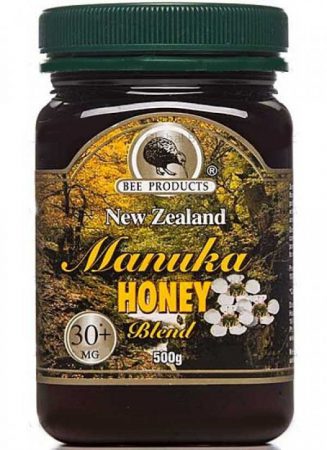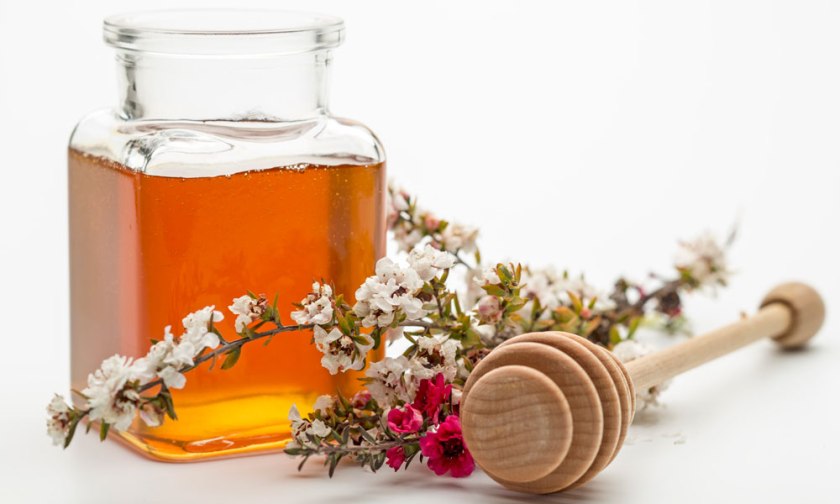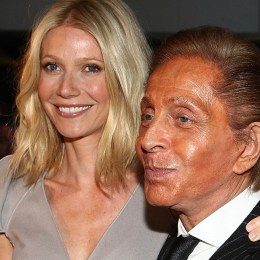Scarlett Johansson uses it as a face mask. Lizzie Jagger puts it on her lips to “protect them from germs”. The Kardashians are buying it in bulk.
There’s a lot of buzz around Manuka honey at the moment and health gurus are celebrating it as a superfood.
An abundance of anecdotal evidence suggests it heals a range of autoimmune diseases while New Zealand’s indigenous cultures have harnessd it to cure skin conditions for thousands of years.
The latter use is supported by science. In a recent Sydney University study, research concluded that it killed the strains of bacteria commonly found in infected wounds.
We explore the skin benefits of the miraculous foodstuff that aficionados call “liquid gold”.

What is it?
Manuka honey is dark in colour with a distinct, rich flavour. It is made by bees feasting on the flower-nectar of either the Manuka bush native to NZ or the Jellybush in Australia. Both are from the Tea Tree family.

How is it different to other honey?
Honey is classified according to the pollen count of the flower that the bee sources nectar from.
“Only honey with a dominant Manuka pollen count can be classified as Manuka honey,” explains Cheryle Nye, who has studied the beautification benefits of it for over 20 years and manufactures CResults, a range of professional grade skincare products, which contain the sweet stuff.
“Most types of honey contain hydrogen peroxide which is a natural antiseptic but Manuka honey contains a unique molecule called methylglyoxal, formerly known as the X-factor.”
“Methylglyoxal is the active ingredient in Manuka honey – it’s the natural compound that has all the healing benefits.”
Why is it healing?
- The methylglyoxal is effective against many kinds of bacteria including antibiotic-resistant “superbugs”.
- It has been shown to destroy microbes, which include yeasts and fungi.
- It is an antioxidant that can help increase immunity.
- The hydration factor – “Manuka honey is a natural humectant, so it has the ability to attract and hold water from the surrounding environment,” says Cheryle.

What are the specific skin benefits?
Effective against the bacteria commonly found in skin infections, the British National Health Service have licensed medical grade Manuka honey as a wound dressing.
Trials indicate that Manuka honey can heal wounds and skin ulcers that haven’t responded to standard treatments.
It therefore thought to be useful in treating other skin conditions – particularly skin that is inflamed from bacteria.
“Because it’s a humectant it reduces scar tissue and can have an overall beautifying effect on the skin,” Cheryle adds.
- Acne
- Pigmentation
- Ageing
- Rosacea

How do you reap the benefits?
- Eat like normal honey – Consume raw for its antioxidant properties.
- Spot treatment – Apply raw Manuka honey directly to a problem area as a “spot treatment” – smooth on a thin layer over clean skin.
- Mask it – For a glow like Scarlett Johansson use it as a (rather sticky) face pack – “You just warm your face so that your pores are open … and then you just take a spoon and apply the raw honey directly to your face and leave it for 10 to 15 minutes,” she says.
- Find it in skincare products – “When mixing a Manuka honey-based skincare product yourself, the end product will often be inconsistent in its effectiveness and can be very wasteful. It can also be uncomfortable and is messy to clean up. I knew of the strength and abilities of topical application so I decided to make products that has all the positive attributes but is user friendly,” Cheryle says.




